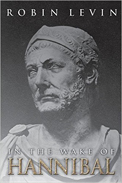
 |
The Carthaginian Empire successfully invaded the Iberian Peninsula (Modern Spain) after Hamilcar Barca established Carthage’s presence there, initially to secure important gold and silver mines. His three sons, Hannibal, Hasdrubal, and Mago eventually live there in Khart Hadasht (modern Cartagena). This book centers on the Second Punic War (218-201 B.C), when Hannibal embarks with a large army to invade and conquer Rome once and for all by crossing north over the Alps with a herd of elephants. We view the events from the viewpoints of Mago, Hannibal’s youngest brother, his best friend Gisco, and Gisco’s wife Sansara. Court politics, imperial ambitions, and the tactics of mercenary warfare are explored. Also explored is the question of Carthaginian child sacrifice, an issue that Gisco is forced to confront when a priest of Ba-al demands he surrender a son.
The plot is straightforward, being a recounting of Hannibal’s attempt to conquer Rome. The fictional value comes in the characterizations, with Mago and Gisco’s relationship giving the narrative a humanized feel. Sansara’s viewpoint portrays what life in a politically arranged marriage made to cement allies might be like in ancient times. The author pulls no punches in describing Hannibal’s willingness to exterminate entire cities who refused to surrender their allegiance to Rome. Crucifixions, beheadings, torture, and burning were all methods of political control and both Romans and Carthaginians used them. Slavery and humiliation were also expressions of power. Hannibal, the main driver of action in the novel, is only viewed from outside. Even so, his almost obsessive desire to conquer Rome colors almost every aspect of the work. He is not valorized or made heroic here, but the largeness of his personality is apparent. The long and costly war is shown to be ultimately fruitless, with Rome maintaining her hegemony in the end.
RECOMMENDED by the US Review